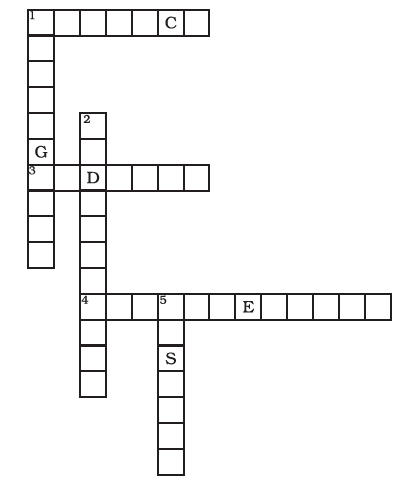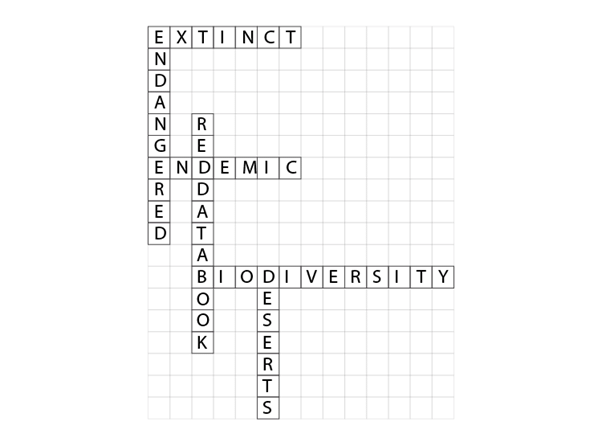NCERT Solutions for Class 8 Science Chapter 5 - Conservation of Plants and Animals
Exercise
Q1: Fill in the blanks:
(a) A place where animals are protected in their natural habitat is called ……………..
Ans: Sanctuaries
(b) Species found only in a particular area is known as ……………..
Ans: Endemic
(c) Migratory birds fly to far away places because of …………….changes.
Ans: Climatic
Q2: Differentiate between the following:
(a) Wildlife sanctuary and biosphere reserve
Ans:
(b) Zoo and wildlife sanctuary
Ans:
(c) Endangered and extinct species
Ans:
(d) Flora and fauna
Ans:
Q3: Discuss the effects of deforestation on the following:
(a) Wild animals
Ans: The habitat of wild animals is drastically reduced. This creates scarcity of food and dwelling place for wild animals.
(b) Environment
Ans: Green plants produce their own food, and all other organisms rely on them for sustenance, so deforestation disrupts the food chain. They also contribute to precipitation, and cutting down forests decreases rainfall. Additionally, green plants absorb carbon dioxide and release oxygen during photosynthesis, helping maintain the balance of these gases in the environment. Deforestation disrupts this balance.
(c) Villages (Rural areas)
Ans: Deforestation leads to soil erosion and results in flash floods. This hampers agricultural activities and thus disturbs the people in rural areas.
(d) Cities (Urban areas)
Ans: Cities depend on rural areas and forests for many items; like food and timber. Deforestation can reduce the supply of necessary items to people in urban areas.
(e) Earth
Ans: The whole earth is full of various ecosystems which together make the biosphere. Deforestation disturbs the balance in the biosphere. It disturbs climatic patterns.
(f) The next generation
Ans: The next generation would get an environment which would be in very bad shape; because of deforestation. Life would be very difficult for the next generation.
Q4: What will happen if:
(a) We go on cutting trees.
Ans: Deforestation will result in environmental degradation and desertification. It will also reduce groundwater reserve.
 Deforestation.
Deforestation.
(b) The habitat of an animal is disturbed.
Ans: The animal would become extinct.
(c) The top layer of soil is exposed.
Ans: It will lead to loss of fertility of soil and finally to desertification.
Q5: Answer in brief:
(a) Why should we conserve biodiversity?
Ans: A rich biodiversity is necessary to protect our environment. That is why we need to conserve biodiversity.
(b) Protected forests are also not completely safe for wild animals. Why?
Ans: Due to growing human population, human interference is on the rise even in protected forests. Moreover, poaching is still uncontrolled in many parts. This is the reason that even protected forests are not completely safe for wild animals.
(c) Some tribals depend on the jungle. How?
Ans: Tribals, who live near a jungle, take many forest products for their use. For example, they take firewood which is used as kitchen fuel. They hunt for some game animals. They utilize many plants as herbs and medicines. They also collect some forest produce which are used as raw materials for various industries.
(d) What are the causes and consequences of deforestation?
Ans: Causes of deforestation are as follows:
- Clearing land for human habitation and cultivation.
- Need of wood for building houses and factories.
- Need of wood for making furniture.
Consequences of deforestation are as follows:
- Soil erosion
- Depletion of groundwater
- Flash flood
- Global warming
(e) What is Red Data Book?
Ans: The Red Data Book is a list of endangered species. It is released by ICUN (International Union for Conservation of Nature). It was first released in 1963.
(f) What do you understand by the term migration?
Ans: Many animals travel to faraway places in search of food and breeding ground; when climatic changes take place in their natural habitat. Migration is usually an annual event. Birds are more famous as long distance migratory species. Many birds from Siberia come to India during winter months in search of warm climate and food.
Q6: In order to meet the ever-increasing demand in factories and for shelter, trees are being continually cut. Is it justified to cut trees for such projects? Discuss and prepare a brief report.
Ans: According to a United Nations report, the primary cause of deforestation is agriculture, which accounts for:
- Subsistence farming: 48%
- Commercial agriculture: 32%
- Logging: 14%
- Fuel wood removals: 5%
Together, these activities contribute to 80% of deforestation. While humans have the right to utilise natural resources, we also have a responsibility to protect the Earth. This can be achieved through:
- Proper planning for afforestation
- Replacing removed trees with new ones
Deforestation has significant consequences, including:
- Increased temperatures and pollution levels
- Higher carbon dioxide levels in the atmosphere
- Lowered groundwater levels
- Disturbance of ecological balance
If tree cutting continues, we risk:
- Reduced rainfall
- Increased flooding
In summary, while cutting trees for factories and shelter may seem necessary, it is crucial to balance these needs with environmental protection through sustainable practices.
Q7: How can you contribute to the maintenance of green wealth of your locality? Make a list of actions to be taken by you.
Ans: I can take following actions to contribute to the maintenance of green wealth in my locality:
- Planting new trees.
- Convincing other people to plant new trees.
- Taking out rallies to create awareness among people.
- Coordinating with local authorities for proper help.
Q8: Explain how deforestation leads to reduced rainfall.
Ans: Deforestation significantly impacts rainfall patterns due to several key factors:
- Transpiration: Green plants release water into the atmosphere through a process called transpiration. This adds moisture, which is essential for rainfall.
- Reduced Vegetation: Fewer trees mean less transpiration, leading to decreased atmospheric moisture and consequently, less rainfall.
- Soil Erosion: Deforestation increases soil erosion, which removes the topsoil that retains moisture, further reducing the soil's ability to hold water.
- Water Cycle Disruption: The removal of trees disrupts the natural water cycle, potentially leading to droughts and affecting local climates.
- Desertification: Over time, deforestation can convert fertile land into deserts, which severely impacts rainfall patterns.
In summary, deforestation leads to reduced rainfall primarily by decreasing transpiration, disrupting the water cycle, and causing soil degradation.
Q9: Find out about national parks in your state. Identify and show their location on the outline map of India.
Ans: Some major national parks have been shown in the following map of India. You can select the national parks which are in your native state and can fill the map accordingly.
Q10: Why should paper be saved? Prepare a list of ways by which you can save paper.
Ans: Paper is made from wood pulp; which means trees need to be cut for making paper. By saving paper, we can in fact save the forest. We can do following to save paper:
- Use old newspaper and notebooks for making rough work while doing your homework.
- Old envelopes can also be used for doing the rough work.
- Paper should be recycled to minimize the need of cutting trees.
- Schools should encourage online submission of reports and assignments so that paper can be saved.
- Don’t take a printout unless it is absolutely necessary.
Q11: Complete the word puzzle:
Down
1. Species on the verge of extinction.
2. A book, carrying information about endangered species.
5. Consequence of deforestation.
Across
1. Species which have vanished.
3. Species found only in a particular habitat.
4. Variety of plants, animals and microorganisms found in an area.
Ans:
Down
1. Endangered
2. Red Data Book
5. Deserts
Across
1. Extinct
3. Endemic
4. Biodiversity

|
136 videos|530 docs|57 tests
|
FAQs on NCERT Solutions for Class 8 Science Chapter 5 - Conservation of Plants and Animals
| 1. What is conservation of plants and animals? |  |
| 2. Why is it important to conserve biodiversity? |  |
| 3. What are some methods of conserving plants and animals? |  |
| 4. How do human activities threaten plant and animal conservation? |  |
| 5. What role do individuals play in the conservation of plants and animals? |  |






















